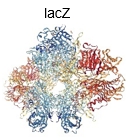Protein extraction is the initial step in the process of purifying proteins, which involves obtaining proteins from cellular sources. This process begins with cell homogenization, where cells are broken open to release their contents into a solution. The resulting mixture is known as the crude extract or homogenate, which contains not only proteins but also organelles such as the nucleus, endoplasmic reticulum, and mitochondria, as well as other cellular molecules like lipids, carbohydrates, and nucleic acids.
To perform cell homogenization, several techniques can be employed. One common method involves using lysis buffers, which are specific solutions that interact with the plasma membrane to facilitate cell rupture. Another approach is mechanical disruption using a blender or homogenizer, which physically breaks open the cells. Additionally, sonication can be utilized, where sound waves are applied to disrupt the cell membranes.
For example, when extracting proteins from red blood cells, the cells are subjected to these homogenization techniques, resulting in the release of various proteins and cellular components into the solution. However, it is important to note that this crude extract is not yet purified; it contains a mixture of proteins and other cellular materials. Therefore, further purification techniques will be necessary to isolate the desired proteins from this complex mixture.
In summary, protein extraction is a crucial first step in protein purification, allowing researchers to obtain a crude extract that includes a variety of cellular components. The next phase in the purification process typically involves differential centrifugation, which will help separate the proteins from other cellular materials.


